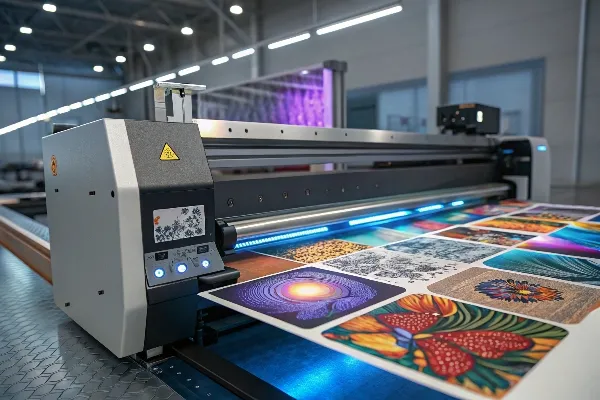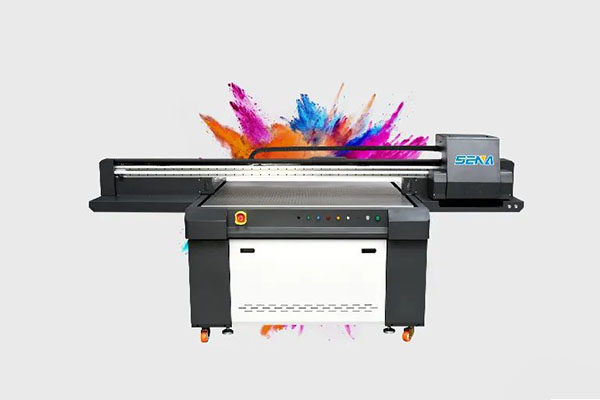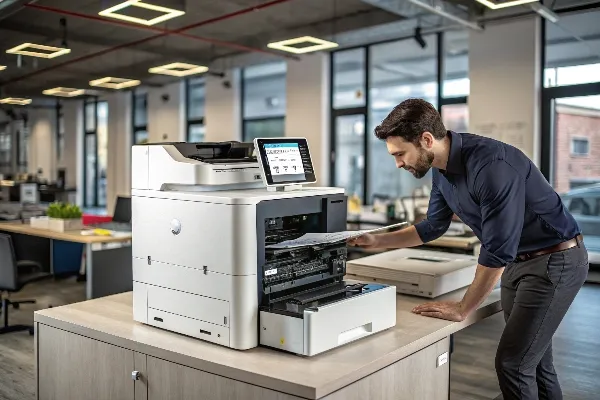Avoid your inquiry is delay response, please enter your WhatsApp/WeChat/Skype along with the message, so we can contact you at the very first time
We will reply you within 24 hours. If for urgent case, please add WhatsApp: +8617888313102, or WeChat: +86 17864107808. Or call +86 17864107808 directly.
*We respect your confidentiality and all information are protected. We will only use your information to respond to your inquiry and will never send unsolicited emails or promotional messages.
If you’re stuck deciding between a digital and laser printer, you’re not alone. This is a common dilemma for many looking to make the right choice for their printing needs.
The key difference between a digital and laser printer lies in how they print and their specific use cases. Digital printers are versatile and offer high-quality prints for photos and color work, while laser printers are ideal for fast, high-volume document printing.
Both printers have unique advantages, but the choice depends on your specific needs. Let’s break it down further, starting with whether digital printing is better than traditional methods.
In the debate of digital vs. traditional print, many wonder if digital printing really offers any substantial benefits over the traditional methods.
Digital printing allows for higher efficiency, customization, and reduced setup times compared to traditional printing. It’s especially effective for small runs and prints that require precision and quick turnarounds.

Difference between digital printing and traditional printing
Digital printing uses advanced technology where digital files are sent directly to the printer, bypassing the need for physical plates or molds. This results in quicker production times and the ability to easily customize each print. Unlike traditional printing methods, digital printing doesn’t require extensive preparation, making it perfect for small quantities or one-off prints. It also handles variable data, meaning you can easily change details like names or addresses on each printed piece. The major drawback, however, is that digital prints might not have the same durability as those from traditional methods like offset printing, especially for high-volume commercial use.
One of the key advantages of digital printing lies in its ability to print on demand. If you’re looking to print a unique design or prototype, digital printing can help you avoid the expensive costs of traditional printing setups. However, it’s worth considering that traditional printing methods, like offset printing, can achieve lower per-unit costs on large-volume jobs. Still, for small businesses or individual print runs, digital printing offers unmatched flexibility and cost efficiency.
Laser printers are often associated with black-and-white printing, but can they handle color prints too? Let’s find out.
Yes, many modern laser printers are equipped to handle color printing, though they may not match the vibrant tones of digital printers. Color laser printers work by using a toner for each color, typically cyan, magenta, yellow, and black (CMYK).

Color printing capability of laser printer
Laser printers use a completely different technology compared to inkjet printers. Rather than spraying ink onto paper, a laser printer uses heat to fuse toner (powder) to the paper. Color laser printers can print using the same basic principles, but they require multiple toner cartridges for different colors. The most common color laser printers use the CMYK model, where each color is represented by a separate toner cartridge.
Color laser printers can produce sharp, consistent results, especially for text and business documents with simple graphics. However, they may not produce the same depth of color or gradient accuracy as a high-end digital inkjet printer. This means that if you’re looking to print photos or artwork, a digital printer would still be the better option. Laser printers are more suited for professional business environments where documents need to be printed quickly and in large quantities. The major disadvantage here is that color laser printers are generally more expensive upfront and require frequent toner replacements.
LaserJet printers, while highly efficient, have their own set of drawbacks. Are they right for you? Let’s explore some of the disadvantages.
Despite their speed and efficiency, LaserJet printers can be expensive upfront, and the cost of toner replacements over time can add up quickly. They also tend to be bulky, requiring a large workspace.

Disadvantages of LaserJet printer
LaserJet printers are perfect for high-volume, fast-paced printing, but they come with significant drawbacks. The most glaring disadvantage is the initial cost. While inkjet printers are relatively inexpensive to purchase, LaserJet printers require a larger investment upfront. Additionally, toner cartridges for LaserJet printers are often more expensive than ink for inkjet printers, especially when you need to replace them frequently. This can lead to higher operating costs over time, especially for small businesses or home offices with limited budgets.
Another downside of LaserJet printers is their size. These printers are often bulky and may not fit easily in smaller workspaces. For personal or home use, a LaserJet printer might feel like overkill. Furthermore, while they excel at printing documents quickly and efficiently, their print quality for photos or color-rich graphics is often inferior to that of inkjet or digital printers.
Are digital color printers essentially the same as laser printers? Let’s clarify the difference between the two.
A digital color printer is not necessarily a laser printer, though some digital printers use laser technology. Digital color printers include inkjet models as well, which are distinct from laser technology.
Digital color printers can refer to both inkjet and laser technologies, but they differ in terms of how they print. Digital printers use digital files directly to create prints, whereas traditional printers use physical plates. While some digital color printers use lasers, not all of them do. Inkjet digital printers, for example, utilize ink to create color prints and are often used for high-quality photo prints. Laser digital printers, on the other hand, use toner powder and laser beams to create prints.
When it comes to quality, laser printers may have an advantage in terms of sharp text and quick print speeds, especially for documents that require precision. However, inkjet digital printers are typically preferred for high-quality color prints, such as photos, as they provide better color accuracy and smoother transitions between hues.
If you’re torn between a laser and inkjet printer, you’re not alone. Both options offer distinct advantages, but which is the best choice for you?
For quick, high-volume printing, a laser printer is your best bet. If you’re focused on photo printing or high-quality color output, an inkjet printer will serve you better.
Choosing between a laser and an inkjet printer really depends on your printing needs. Laser printers are perfect for users who need high-speed printing with clear text and documents. They also tend to have a lower cost per page, making them ideal for office environments where you print a lot of documents regularly. However, laser printer1s struggle with color depth and photo-quality prints.
On the other hand, inkjet printers excel in producing high-quality color prints and images, which makes them a favorite for photo enthusiasts and creative professionals. Inkjet printers are also more affordable upfront, but the ink can be expensive, especially if you’re printing a lot. Another thing to consider is that inkjet printers often have slower print speeds, which might not be suitable for high-volume printing tasks.
Toner for laser printers is often considered a higher expense than ink for inkjet printers. But is it always more expensive in the long run?
Yes, toner cartridges are generally more expensive than ink cartridges, but they last much longer, which may reduce the overall cost per print2 in high-volume settings.
Toner cartridges are typically more expensive than ink cartridges, which can make the initial cost of a laser printer seem higher. However, toner tends to last longer than ink, which can make it more cost-effective in the long run, especially for high-volume users. While inkjet printers may have cheaper upfront costs and more affordable ink cartridges, you might find yourself replacing ink more often. This can lead to higher costs over time, especially if you’re printing large volumes.
Laser printers, on the other hand, use toner powder that’s designed to last longer, reducing the need for frequent replacements. The key is that while toner may seem more expensive initially, its long lifespan and efficiency make it a more economical choice for businesses or individuals who need to print in large volumes.
In the end, the choice between a digital or laser printer depends on your needs. If you value speed and efficiency, a laser printer may be the better option. For high-quality color prints, go for a digital or inkjet printer.